Isfahan, an enchanting city in Iran, is known for its grandeur and architectural marvels. Among its many treasures, the bridges of Isfahan stand as captivating witnesses to centuries of history, connecting the past with the present. These bridges have not only served as functional structures but have also become iconic symbols of Isfahan’s rich cultural heritage. In this exploration, we embark on a journey across time, delving into the intriguing stories and remarkable features of the bridges that have gracefully spanned the Zayandeh Rud River for centuries.
Si-o-Se Pol

Since Shah’s chancellor, Allahverdi Khan Undiladze, oversaw the building, it is also known as the Allahverdi Khan Bridge.
- Behold the majestic silhouette that has earned Si-o-se-pol the title of the most renowned bridge spanning the Zayanderud River, a testament to its strategic placement, awe-inspiring architecture, and commanding presence.
- Transport yourself to the reign of Shah Abbas the Great, a visionary ruler who envisioned a bridge that would not only connect Isfahan to the vibrant Armenian neighborhood of New Julfa but also leave an indelible mark on the city’s landscape.
- With a grandeur befitting its purpose, Si-o-se-pol extends an impressive 295 meters in length, standing tall as the longest bridge in Isfahan, a true marvel of engineering and artistic vision.


- Prepare to be captivated by its distinctive design, as two rows of 33 arches gracefully intertwine, evoking a poetic harmony that has bestowed upon it the name Si-o-se-pol, the “Bridge of Thirty-Three Arches.”
- Let your eyes wander along its expanse, where the foundation’s larger base plank at the beginning adds a touch of visual allure while fortifying its structural integrity.
- Si-o-se-pol transcends its physical presence, becoming a powerful symbol of Isfahan’s cultural heritage, a bridge that unites not only two neighborhoods but also the hearts and souls of its inhabitants, fostering a deep sense of unity and pride.
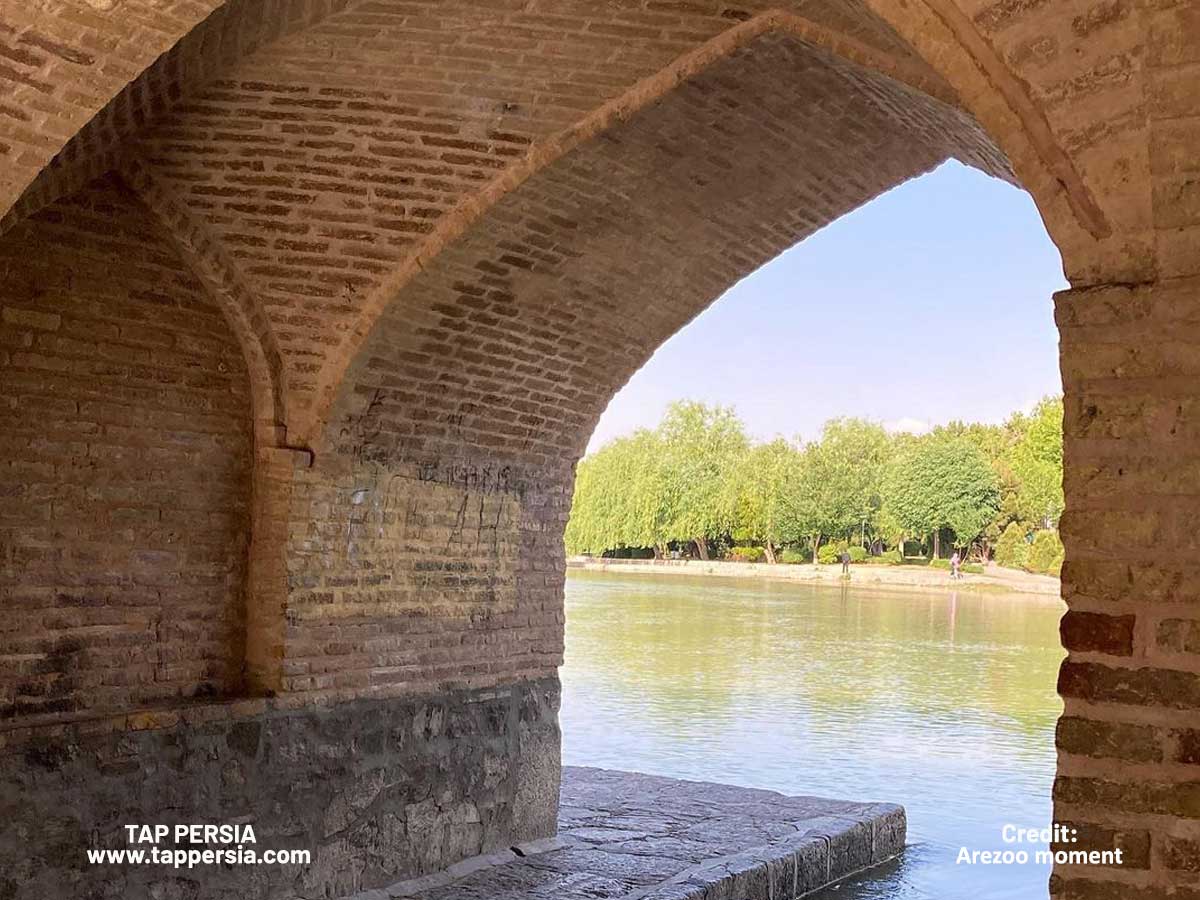

- As you traverse Si-o-se-pol, allow yourself to be transported back in time, where the echoes of centuries past mingle with the vibrant energy of the present, immersing you in the tapestry of Isfahan’s rich history and timeless traditions.
- Experience the magic of Si-o-se-pol, where artistry, engineering, and heritage converge, inviting you to embark on a journey that transcends boundaries and celebrates the enduring spirit of a city.
Shahrestan Bridge
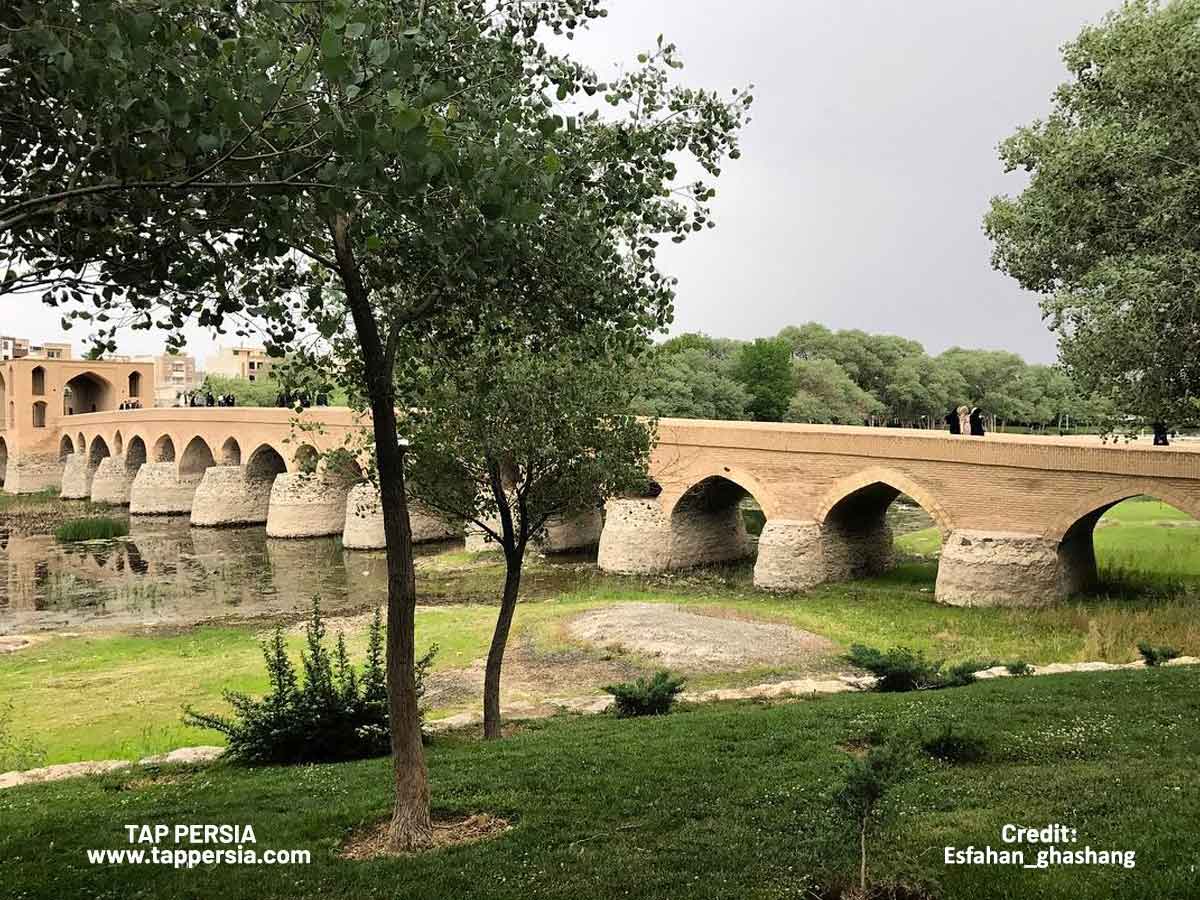
The Shahrestan Bridge, which lies east of the heart of the central city, is the oldest of these five bridges.
- Steeped in history, the foundations of this bridge trace back to the majestic Sasanian Empire, adding an air of ancient allure to its architectural splendor.
- Witnessing the passage of time, the bridge has undergone renovations during the reigns of the Buyid Empire and the Seljuk Empire, further enhancing its artistic appeal.
- The bridge boasts two captivating parabolas, intricately designed to withstand the river’s flow. The horizontal parabola curves westward, fortifying the structure, while the vertical parabola ensures the bridge’s highest point rests at its center.
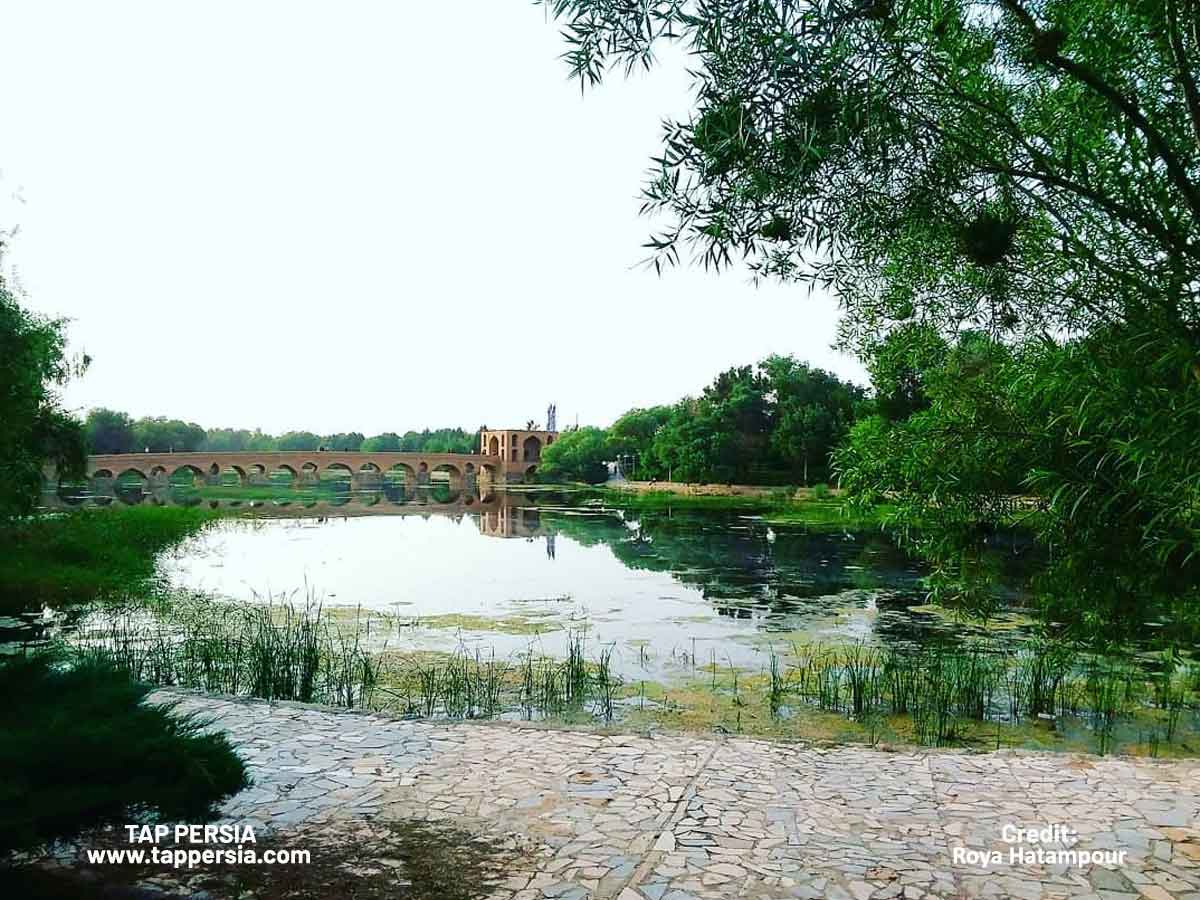
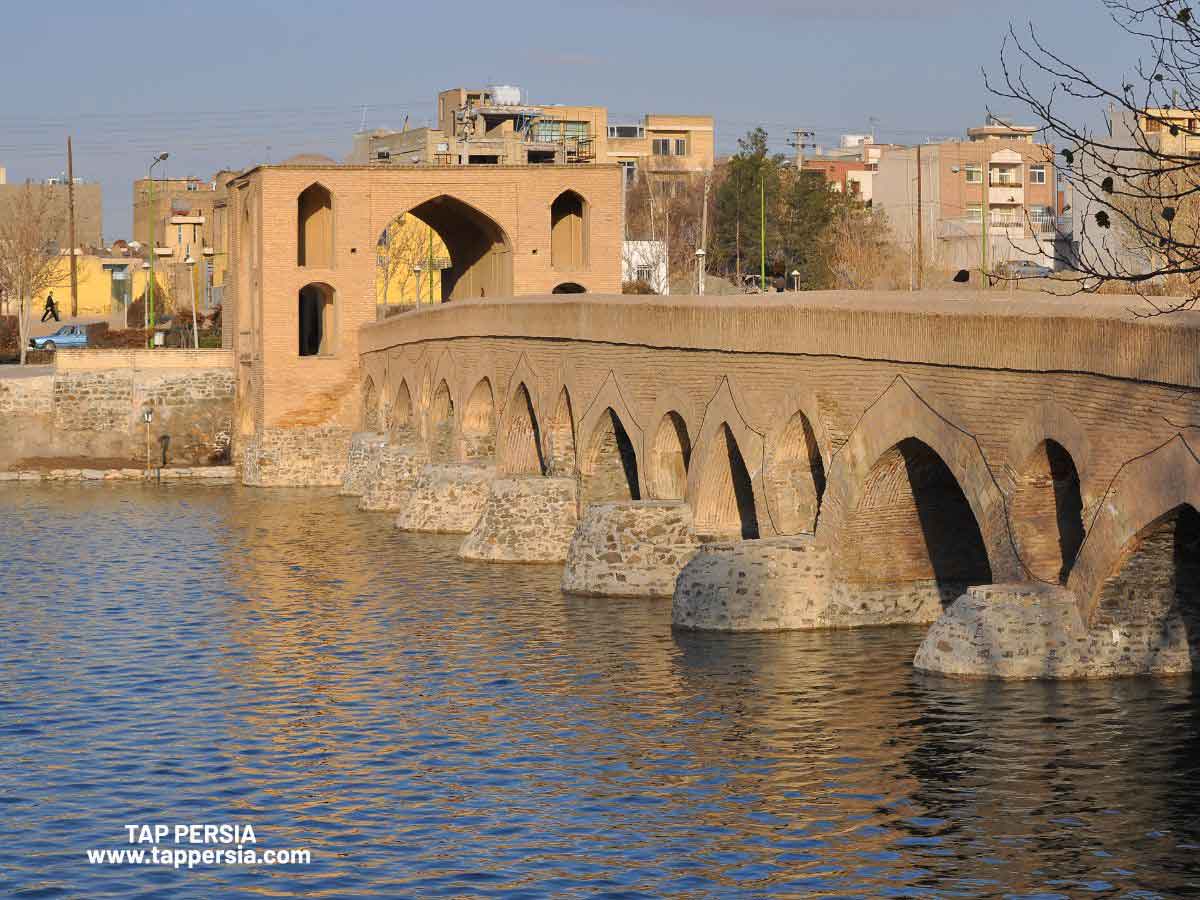
- With an average width of 5.2 meters and a length of 108 meters, the bridge stands as a testament to exquisite craftsmanship and meticulous engineering.
- The pointed arches, arranged in two layers, create a mesmerizing visual display. Thirteen larger arches gracefully encase eight smaller arches, strategically placed to alleviate pressure and facilitate the swift passage of water during floods.
- Through its architectural ingenuity and functional design, the bridge harmonizes with the natural forces of the river, creating a captivating blend of art and engineering.
Khaju Bridge
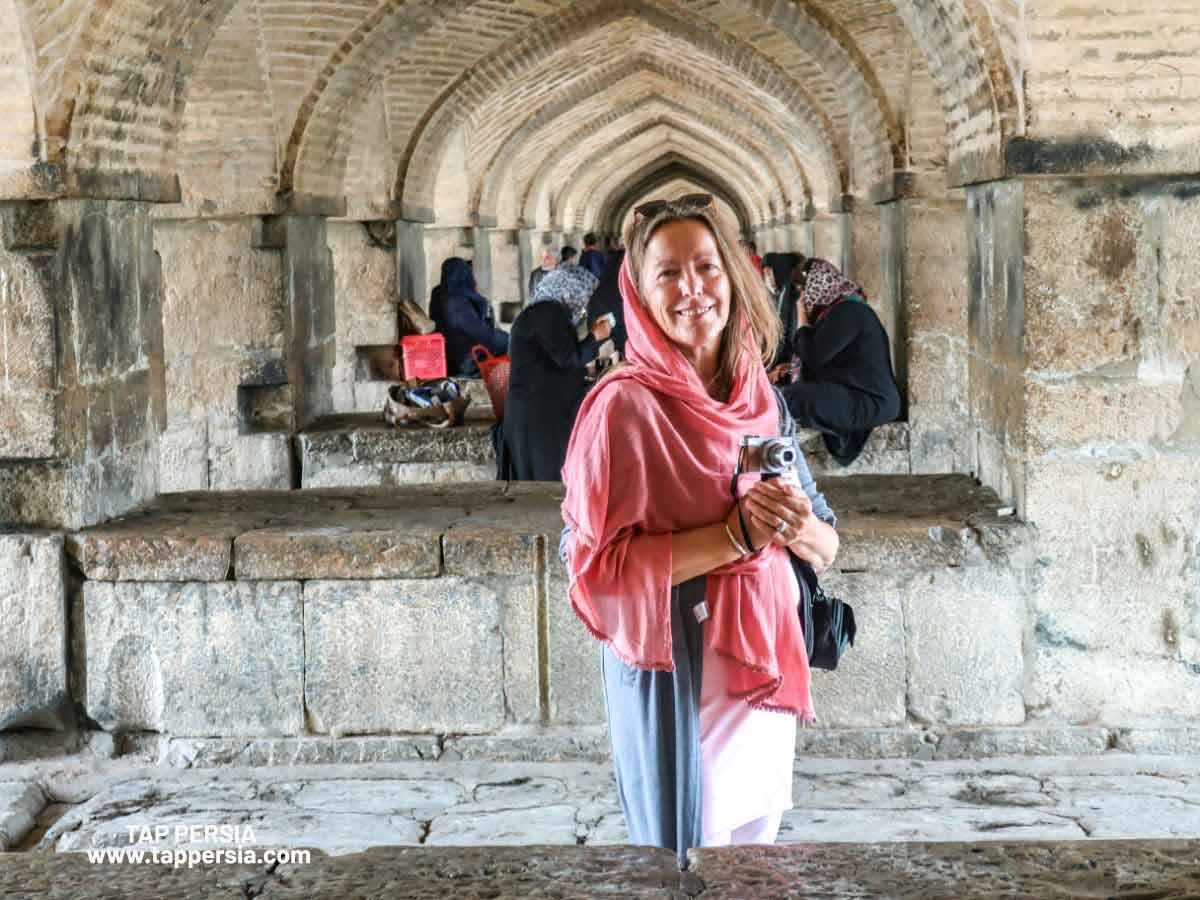
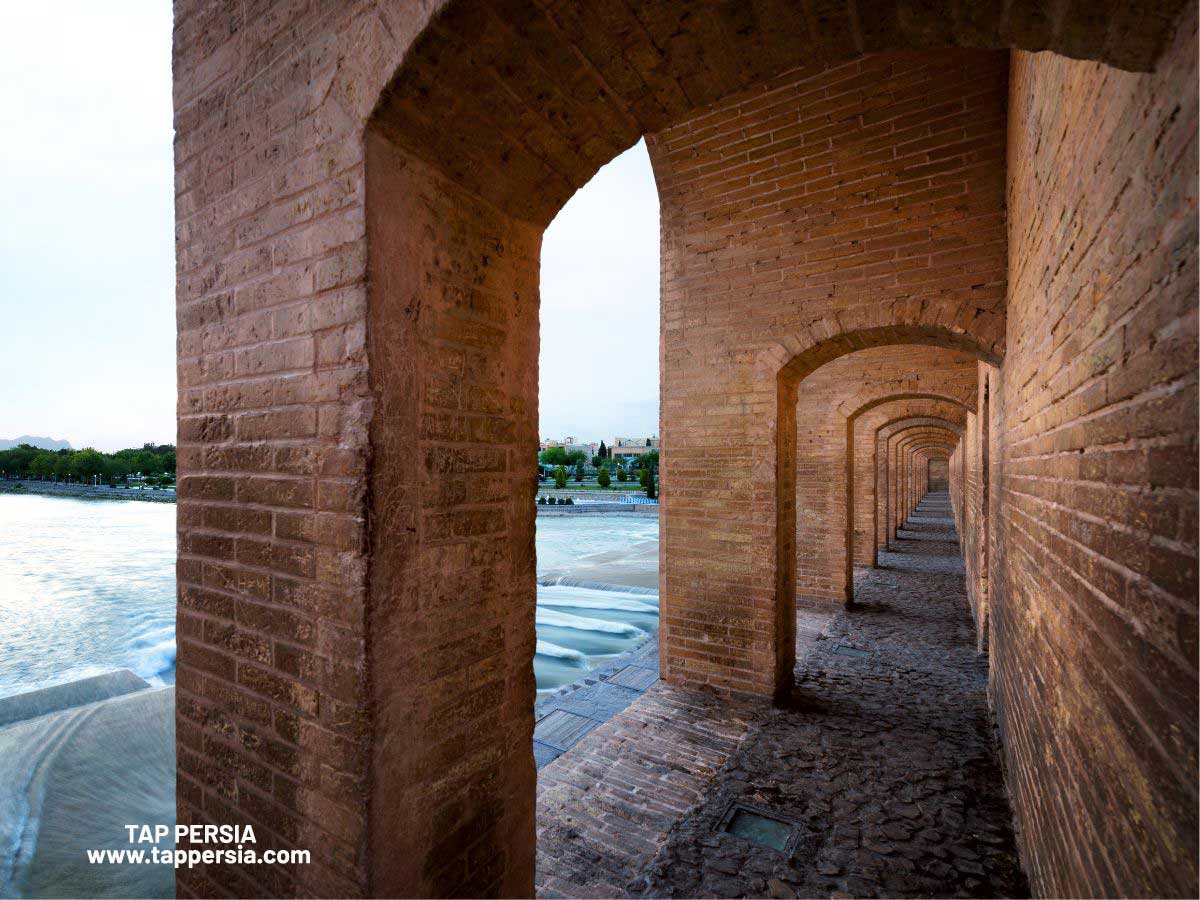
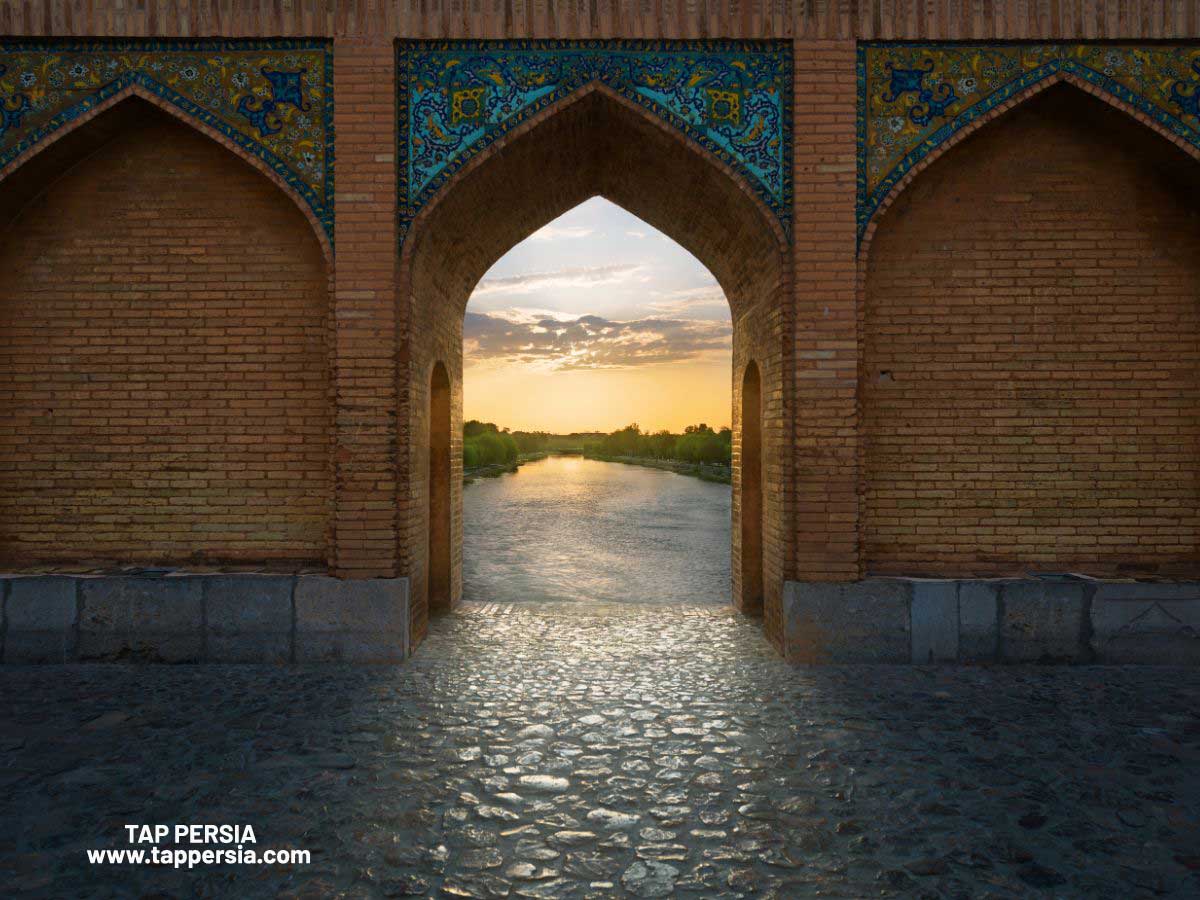
The Khaju Bridge is another great historical bridge in Isfahan.
- In the heart of the 17th century, the visionary Shah Abbas II of the Safavid Dynasty brought forth the Khaju Bridge, an architectural marvel that transcends time and captivates the senses.
- Immerse yourself in the grandeur of Persian design as you traverse this magnificent two-story bridge, a vibrant hub where social connections are forged and cultural exchanges flourish.
- With its awe-inspiring presence, the Khaju Bridge boasts an impressive array of 24 arches, spanning a passage of 7.5 meters and adorned with 21 larger channels intertwined with 26 smaller ones.
- Stretching 133 meters in length and 12 meters in width, this architectural masterpiece invites you to wander through its enchanting corridors and witness history unfold.
- Discover a microcosm of tranquility within the vaulted area beneath the arches, where a harmonious interplay of light and shadow creates a captivating microclimate.
- Prepare to be mesmerized by the ingeniously designed stepped cascade on the western side of the bridge, a testament to the bridge’s ingenuity in managing floods while adding an element of artistic allure.

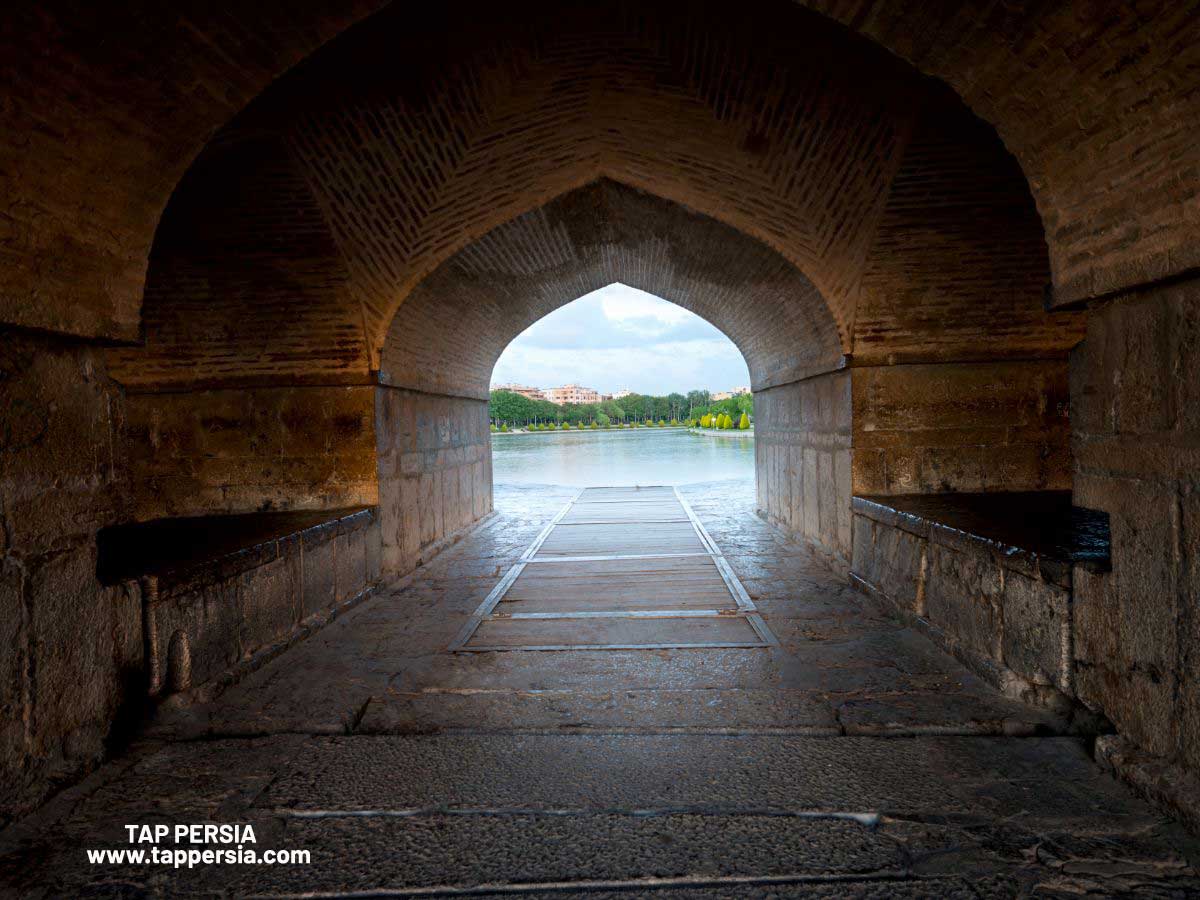
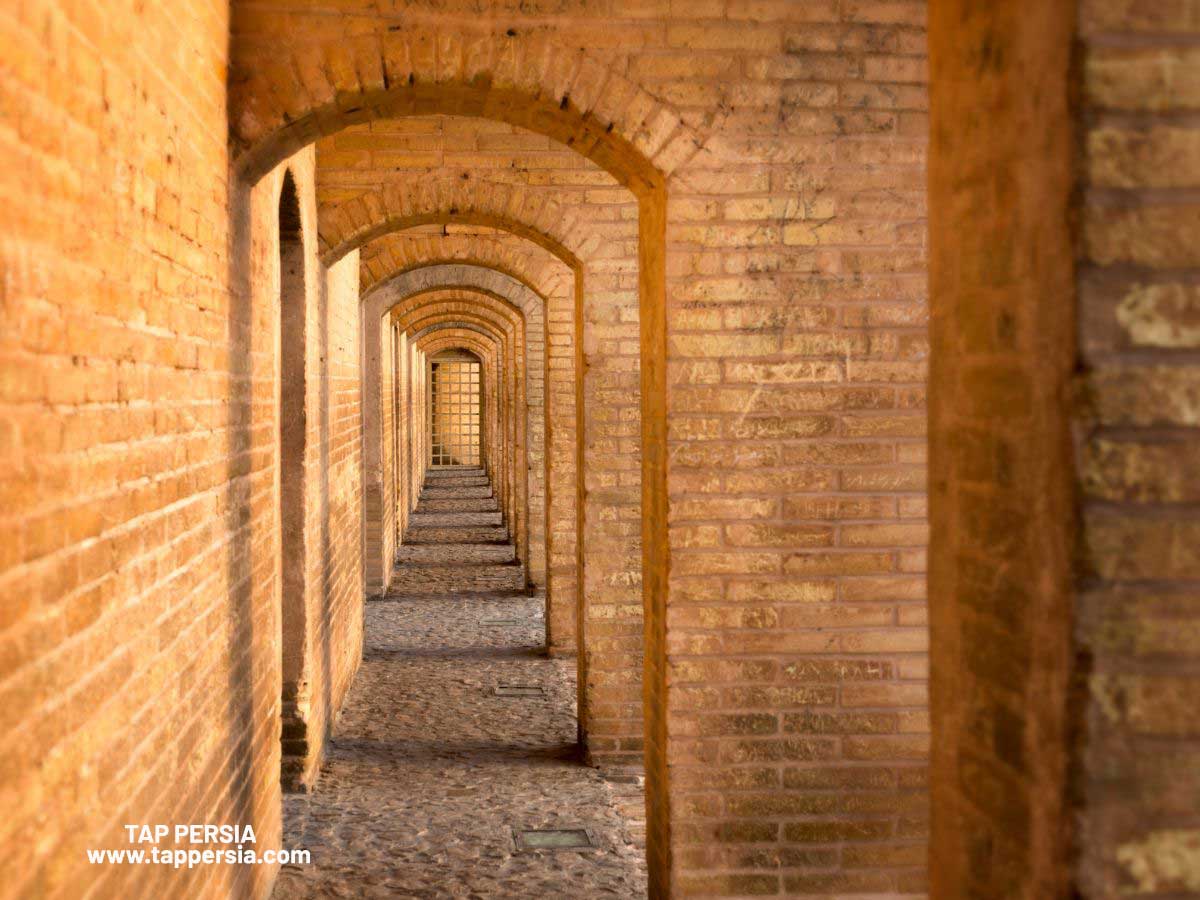
- As you explore its splendor, encounter a pavilion nestled in the heart of the bridge, serving not only as a weir but also as a gathering place for public festivities, where memories are made and stories are shared.
- Imagine the Shah himself, seated upon his stone throne, absorbing the breathtaking vistas that unfold before him, leaving behind only a solitary stone seat as a reminder of his presence.
- Don’t miss the opportunity to explore the neighboring Mausoleum of Arthur Pope and his wife, Phyllis Ackerman, adding yet another layer of intrigue and historical significance to this extraordinary destination.
Choobi (Joui) Bridge
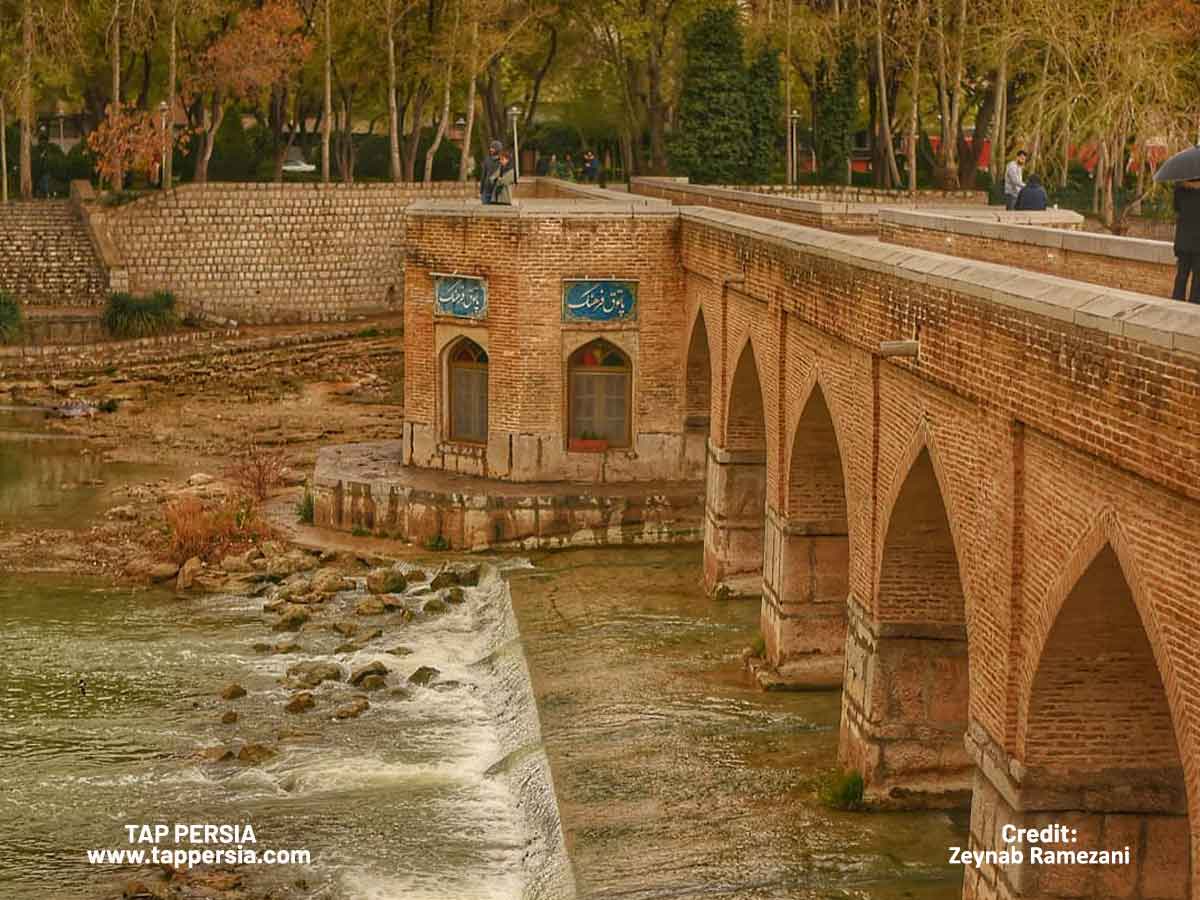
In Isfahan, there is another intriguing historical bridge called the Choobi (Joui) bridge.
- In 1665, Shah Abbas II undertook the construction of a captivating bridge, initially intended to irrigate and unite his majestic imperial gardens on the river’s north bank.
- This bridge, known by its original name “Joui,” served as a private passageway exclusive to the court and esteemed officials, connecting the opulent royal residences that graced its surroundings.
- As a testament to its unique construction, the bridge featured a Persian stone stream, enabling the graceful flow of water from one side to the other. Over time, the bridge came to be known as “Choobi Bridge,” paying homage to its wooden structure.
- The Choobi Bridge stands as a striking masterpiece, measuring 4 meters in width and spanning an impressive length of 147 meters. Its architectural allure is heightened by the presence of 21 arched sections.
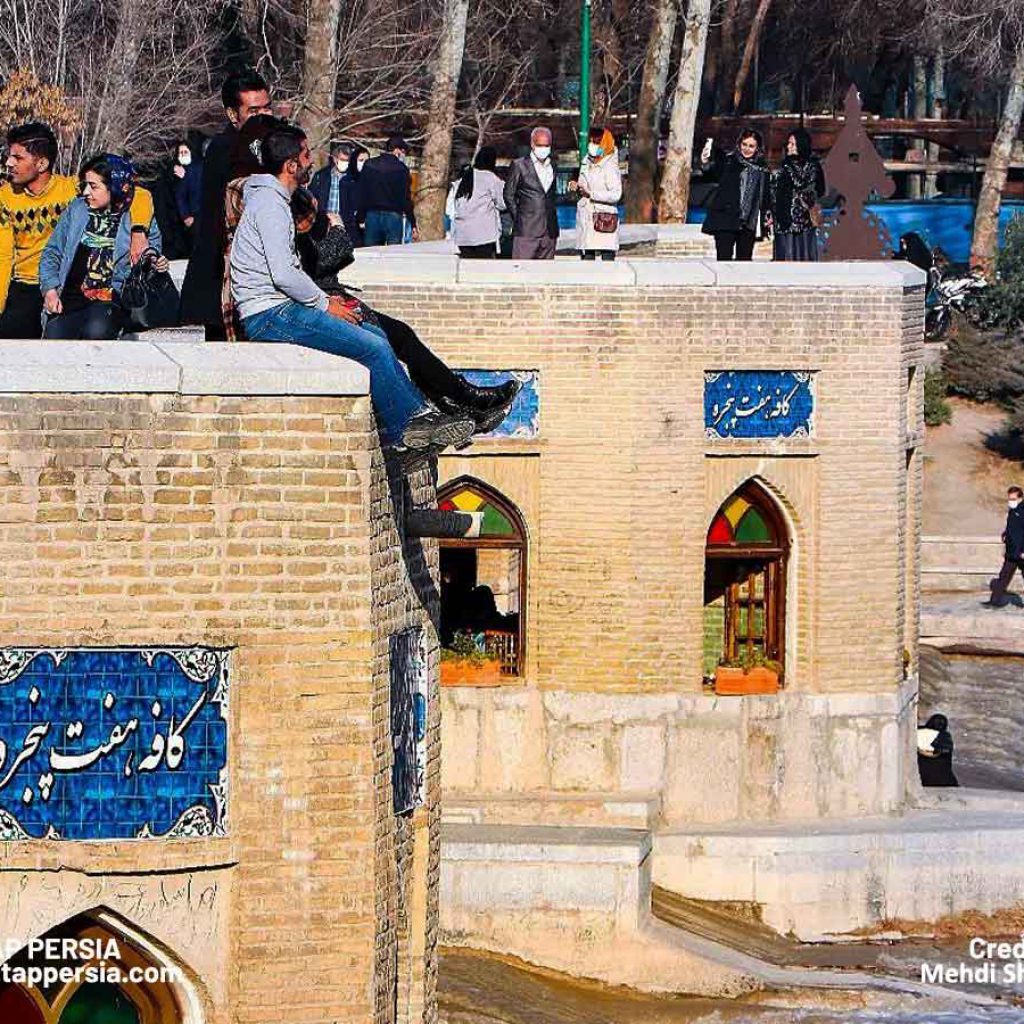
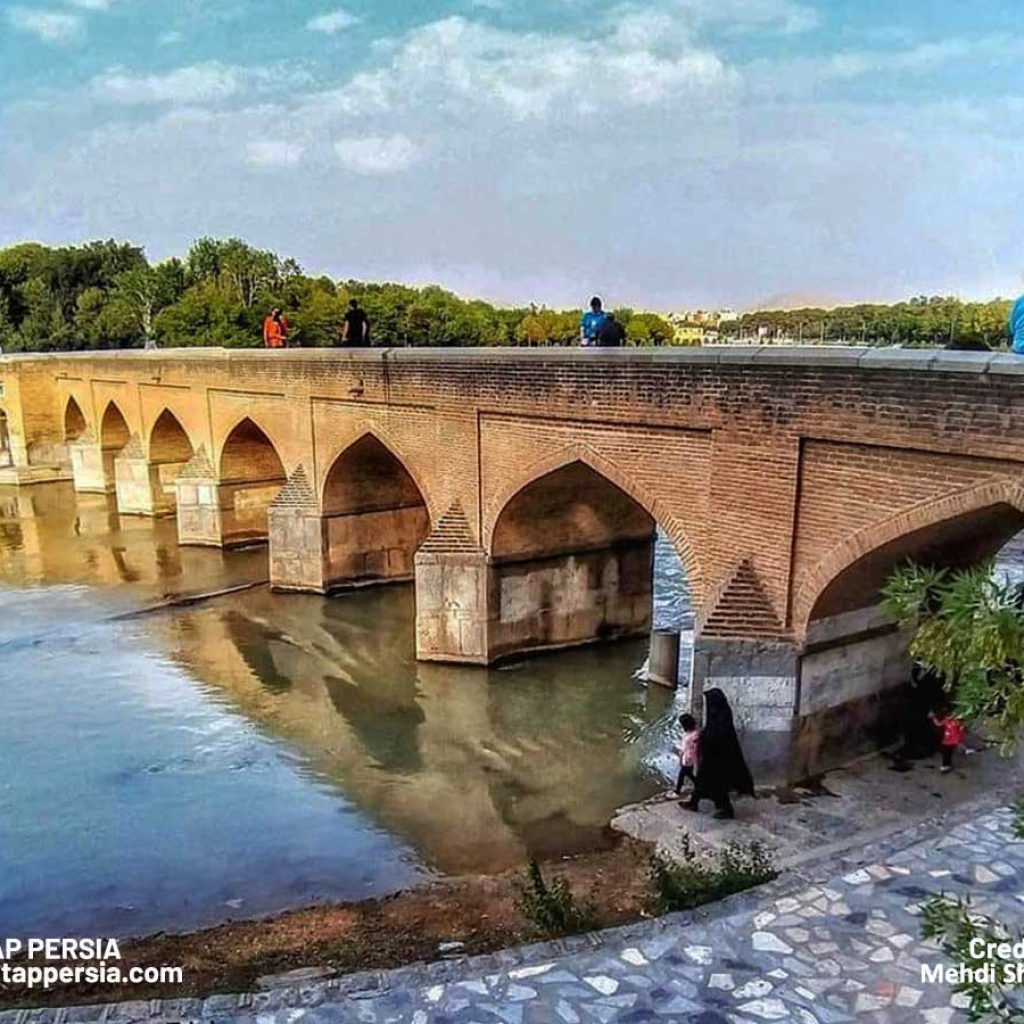
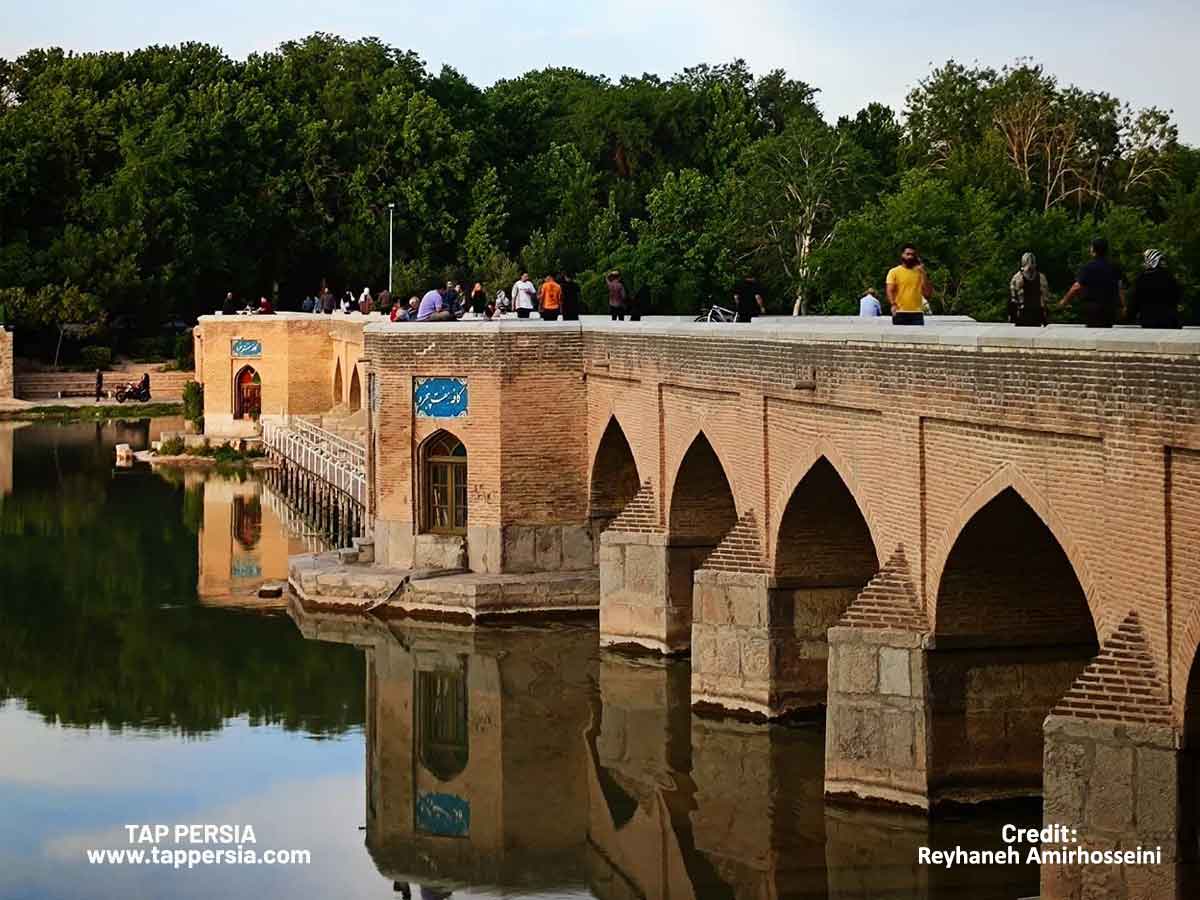
- Reserved exclusively for the Shah and his esteemed courtiers, the bridge boasted two magnificent parlors, which today have been transformed into charming tea rooms, preserving the bridge’s rich history.
- Beyond its functional purpose, this enchanting bridge served as a vital connection between homes and gardens, weaving a tapestry of beauty and elegance.
- Revered for its transformative effect, the western portion of the bridge, where the river water shifted, created a picturesque illusion resembling a serene lake. It is this characteristic that led to its alternative name, the “Lake Bridge.”
- Step into the footsteps of royalty as you traverse the Choobi Bridge, immersing yourself in the timeless beauty and tranquility that encapsulates this extraordinary structure.
Marnan Bridge
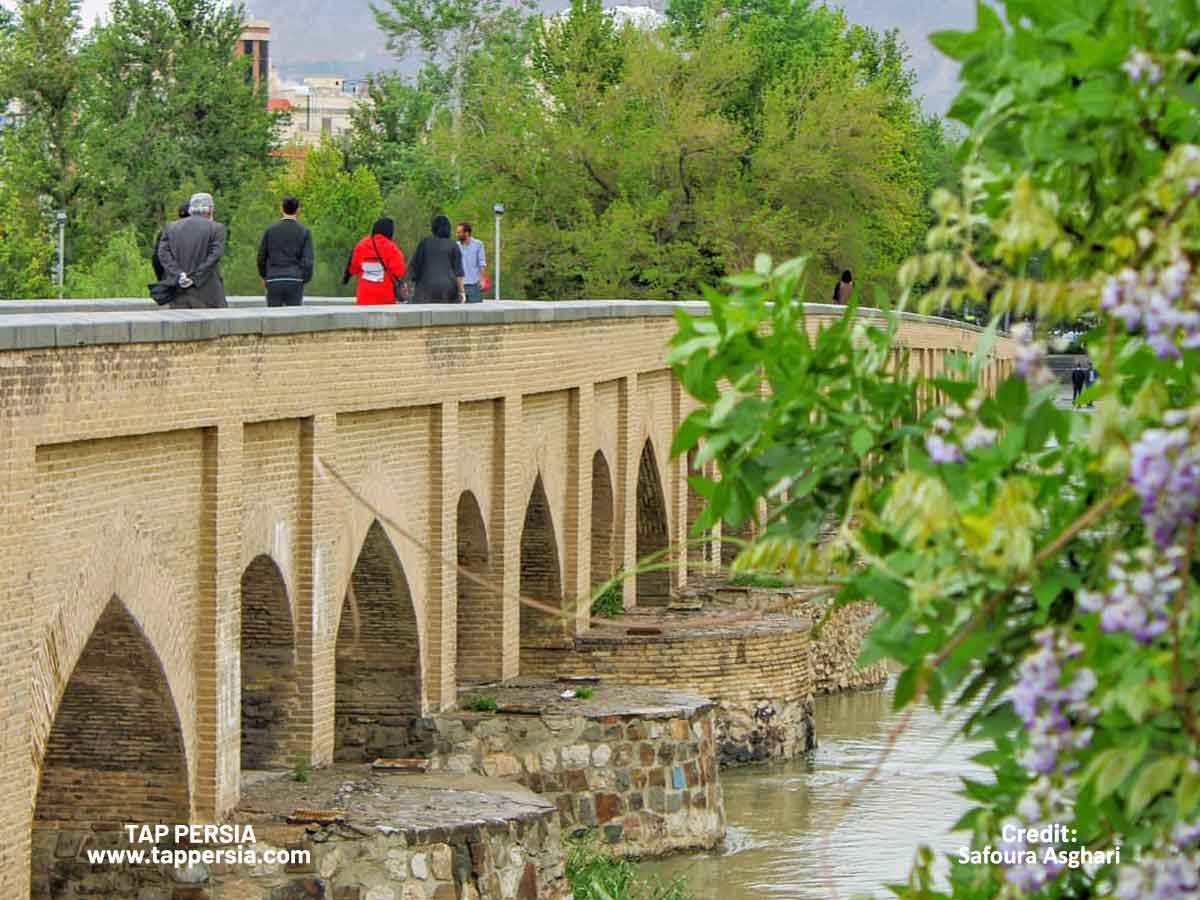
The Marnan Bridge is a famous bridge that was built during the Sassanid era and is situated east of Chahar Bagh Street.
- Delve into the origins of the city’s name as you discover the Mehrbin Bridge, believed to be derived from a nearby Mithraism temple, evoking a sense of ancient mysticism.
- Uncover the layers of history and heritage as you explore the bridge, known also as the Sarfaraz Bridge, meticulously reconstructed by the skilled hands of Khajeh Sarfaraz during the 17th century.
- Embark on a journey across time and cultures as you traverse this architectural gem, bridging together the historic Marnan community with the vibrant Armenian neighborhood of Jolfa.
- Immerse yourself in the dimensions of the Mehrbin Bridge, stretching 4.7 meters in breadth and extending an impressive length of 175 meters, inviting you to embark on a captivating passage.
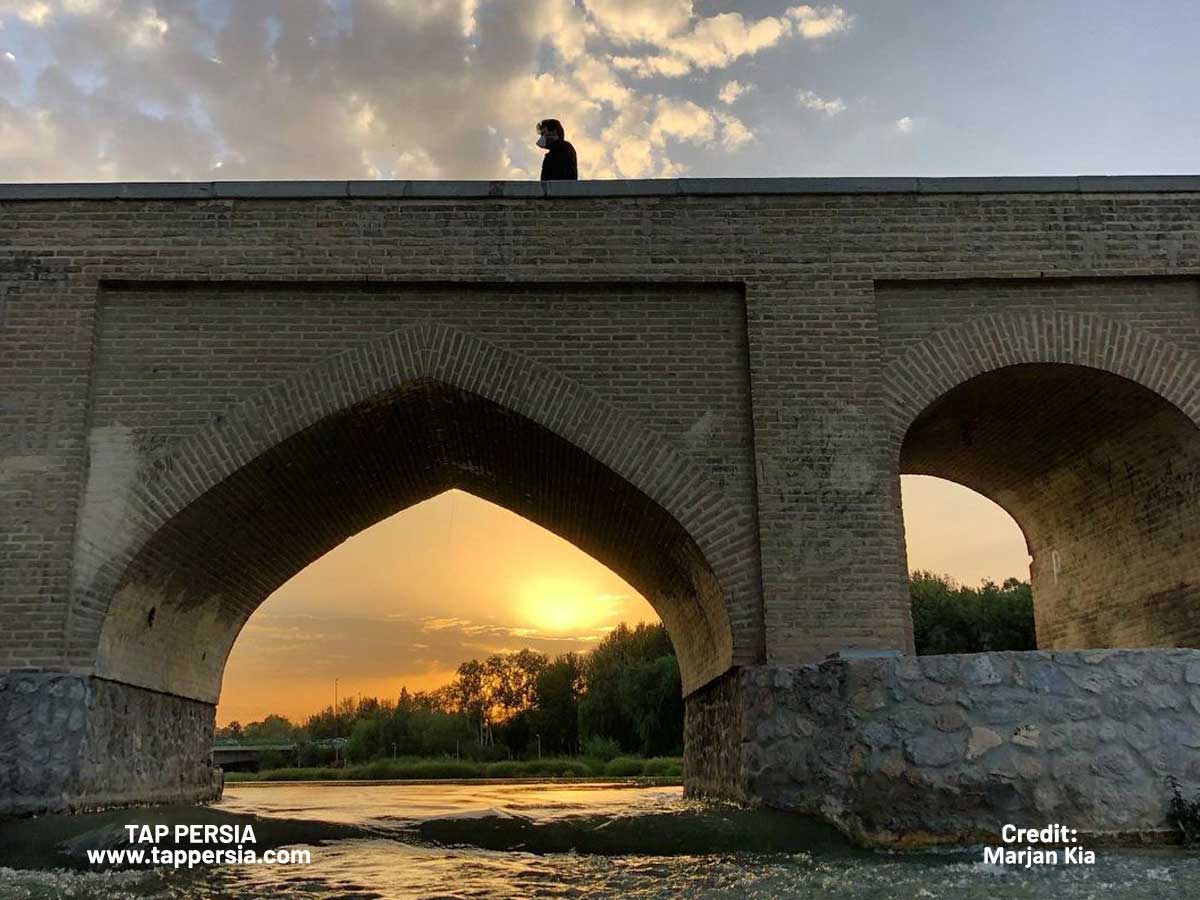
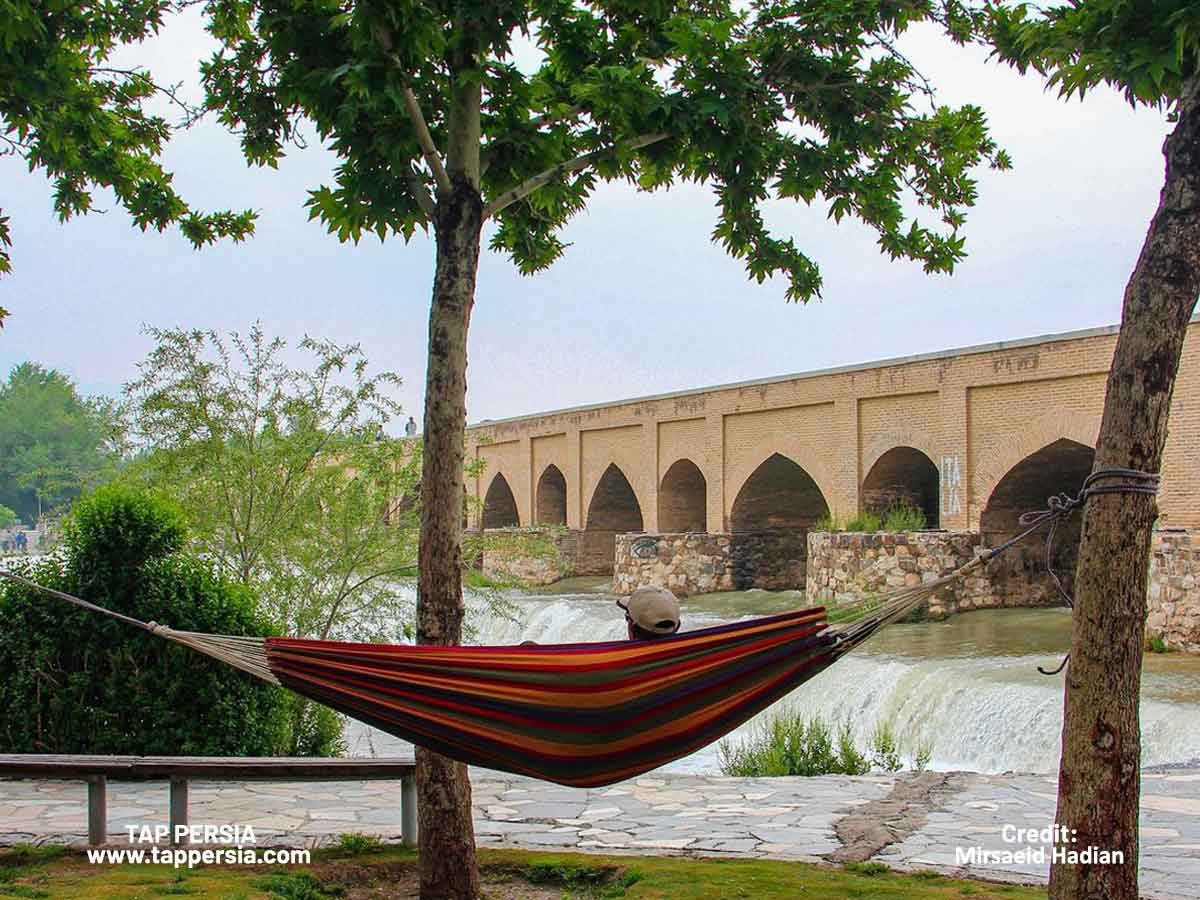
- Experience the harmonious symphony of nature as you approach the eastern side of the bridge, where a gentle waterfall roars nearby, offering a refreshing respite and an invigorating ambiance to bask in the serenity of the flowing river.
- On the western side, a tranquil stillness envelops the water, creating a serene atmosphere that invites contemplation and reflection.
- Today, the Mehrbin Bridge has transformed into a beloved destination, beckoning visitors to indulge in leisurely picnics, soak in breathtaking river views, and traverse its expanse on foot, providing a gateway to immerse oneself in the enchantment of the Zayanderud River.
- Discover the Mehrbin Bridge, where history and nature intertwine, inviting you to unravel its secrets and make cherished memories amidst its captivating surroundings.
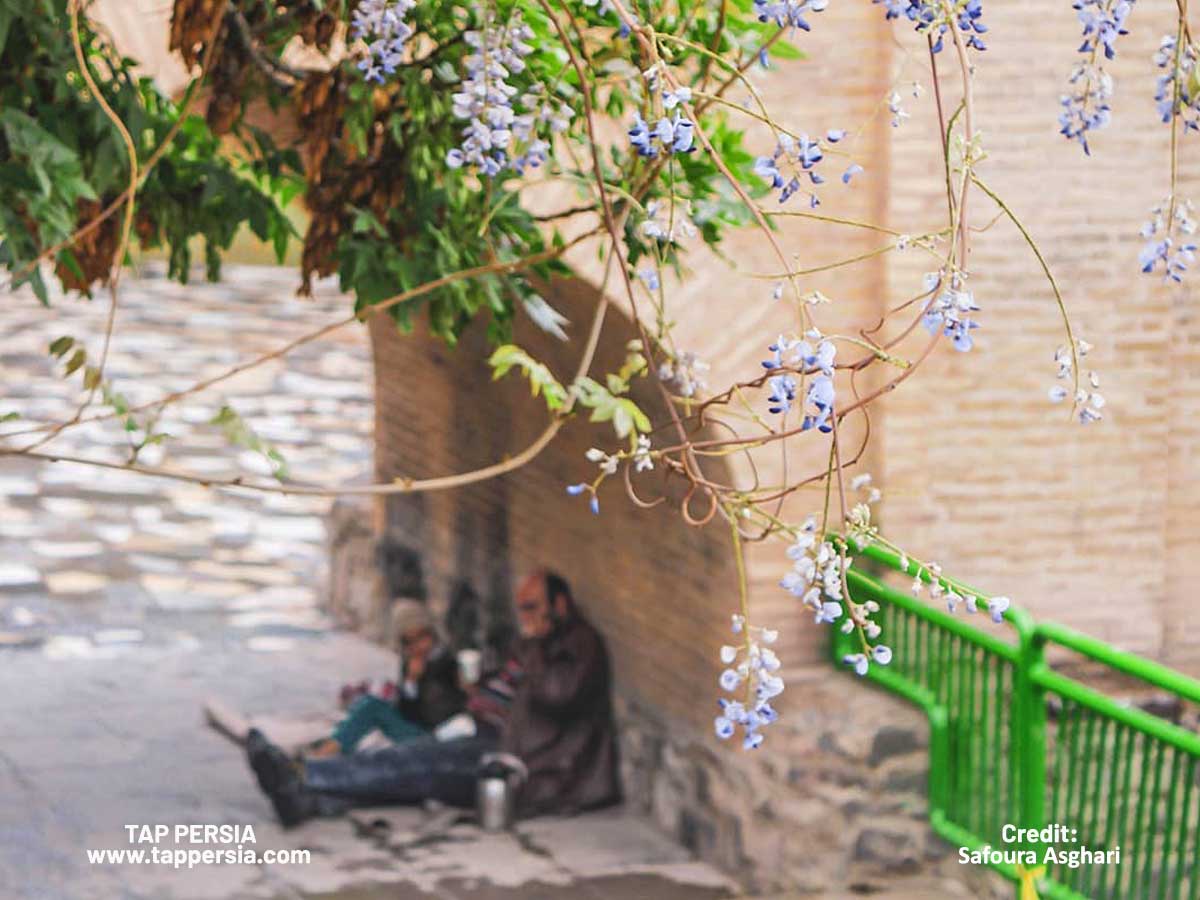
Conclusion
The bridges in Isfahan provide more than simply a way to cross the Zayandeh Rud River; they take us back in time and inspire amazement and wonder. Every building in Isfahan, from the opulence of the Khaju Bridge to the historical importance of the Shahrestan Bridge, offers a different tale that reflects its rich culture and architectural talent. These bridges connect us to the past and leave an imprint on our emotions as we pass them, becoming a part of a story that transcends millennia.
In addition to being magnificent constructions, Isfahan’s bridges serve as entranceways to a realm where history and beauty coexist, inviting us to discover and see the wonders of human ingenuity.




Comment (0)